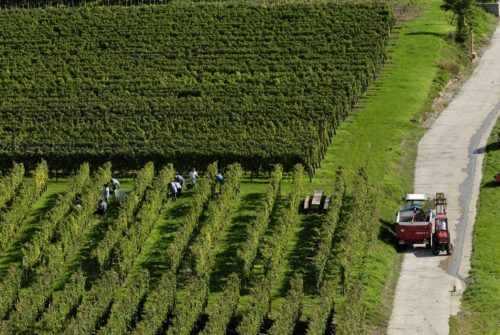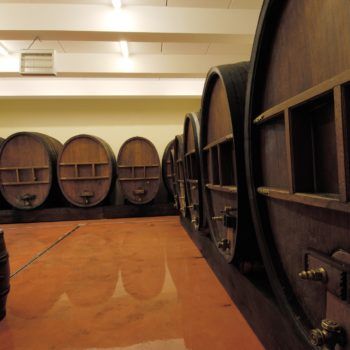Know-how

A constant manual work is performed throughout the year to control the vine mass and density.
The most important pruning (armed with shears to remove the branches) is done in winter. Year after year, we sculpt the vines as a work of art. In winter, piles, anchors and various wires are repaired. The walls are also repaired in that season, since frost and snow tend to damage them the most. In spring until the buds bloom and grow our energy is dedicated to the “tillage”.
There are several ways to obtain the floor and maintain this mainly a function of the slope of the land:
- Steep, erosion problem: to keep greening the earth
- In low slope: Tillage
When the vine unfolds the task of trimming starts to avoid accumulation and ventilate the strain with natural light.
Then comes the work of tying and pruning.
The vine can possibly be affected by two diseases: powdery and downy mildew. Depending on the risk of the disease and weather permitting, we fight against those fungi with organic treatments over a period of two months. Treatment is stopped in late July – early August.
In mid-September the harvest starts and extends over about 6 weeks.
After harvesting, the grapes are processed in several stages.
Our method of growing and caring for the vines allow us to grow healthy grapes; only those are able to produce quality wines and great concentration of flavors.
Our winery is well-equipped with temperature-controlled vats, stemmer, pneumatic press).
Our “bioculture” – organic- requirements advocates less intervention during winemaking.
The white wine is fermented at a lower temperature (18-20 ° C) to release the natural flavors of the grape and the “terroir” (flowers, fruit, minerals…). The red wines go through a longer traditional fermentation (15 to 25 days) and we use indigenous yeasts and monitor constantly the temperatures, which brings out a deep color without extraction.
Our winery is also equipped with 15 to 40 hectoliters oak barrels. The advantage of using oak barrels is a moderate oxygenation, relaxation and polymerization of tannins which brings out more roundness to the wines.
The tasting: a cornerstone of our winemaking
After fermentation, we bring the wine on the “lees” to obtain a specific structure of the wine.
Every step of our winemaking follows a very precise calendar and procedures, passed on by previous generations in our family. Every little detail makes a big differences at the end.









